
The first time I saw one of Tacita Dean’s monumental film-works it was by chance.
Soaring the heights of the Tate’s Turbine Hall, FILM 2011 was an entrancing visual elegy to art, nature and time.
My second chance encounter was in 2018 at the Royal Academy where Dean’s exhibition Landscape was on show. Cooling off on a rare London summer’s day watching the hour-long Antigone I drifted in out of a strange sense of euphoria.
The idea of coincidence and “chance” drove much of the Surrealists’ work from literature to the visual arts and is also at the centre of Dean’s artistic process. At the opening night of a new major exhibition of her work at the Museum of Contemporary Art, Dean described the Surrealist concept of “objective chance” in action.
As an artist in residence at the Getty Research Centre across 2014 and 2015, she randomly pointed to a box from the centre’s archive. On opening the box, she found the key to the studio of 19th century French artist Auguste Rodin, famous for his sculpture The Thinker (1904).
This chance encounter was the start of an extensive project, Monet Hates Me (2021), an exhibition in a box that contains 50 objects and ephemera that reflect the history of art, produced during one of the long COVID-19 lockdowns with her collaborator Martyn Ridgewell.
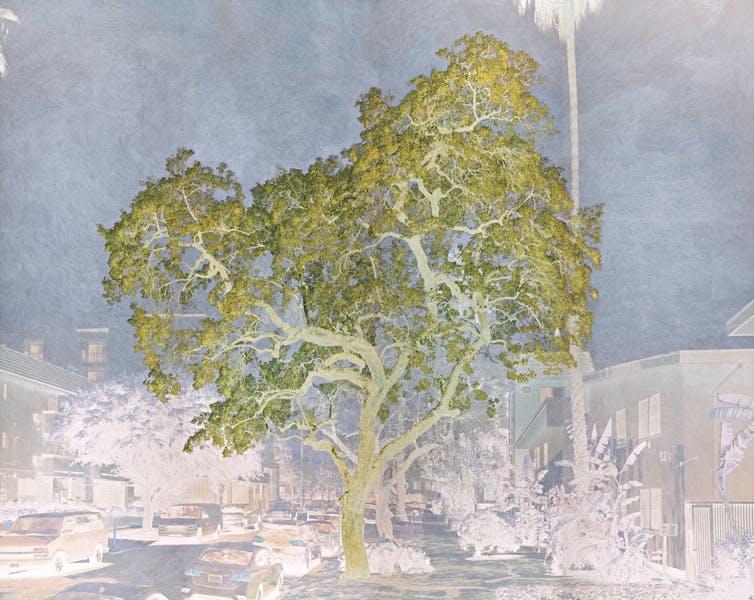
Read more: The amazing NGV Triennial 2023 makes us question our world and forces us to see it differently
From Rodin to Dante
Born in Canterbury, the United Kingdom, in 1965, Dean works across film, photography, drawing, printmaking, immersive installations and more recently set designs and costumes created for The Dante Project, a ballet at the Royal Opera House, captured by Dean in the 35mm film Paradise (2021).
Paradise is a mesmeric, vibrantly coloured abstract film with an exquisite soundtrack, inspired by Dante Alighieri’s poem The Divine Comedy (1321) and the work of British artist William Blake, who created a series of watercolour illustrations based on the poem in 1824. Drawn from his bed during a fortnight of illness that led to Blake’s death, the drawings wield a fevered fascination with the grotesque.
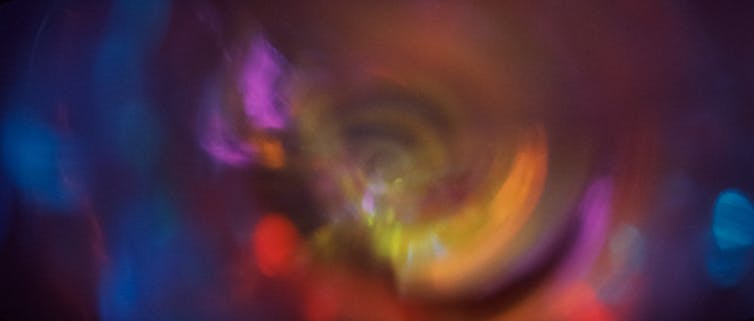
Several works in the exhibition form conversations with artists. The film Buon Fresco (2014) shows exquisite details of Giotto’s Renaissance fresco (a wall painting) in the Upper Basilica of St Francis of Assisi in Italy.
One “film portrait” captures Claes Oldenburg, known for his enormous sculptures of everyday objects such as a clothes-peg, as he drew in his studio.
One Hundred and Fifty Years of Painting (2021) features Ethiopian-American contemporary painter Julie Mehretu in conversation with the 99-year-old Venezuelan-born artist Luchita Hurtado shortly before her death.
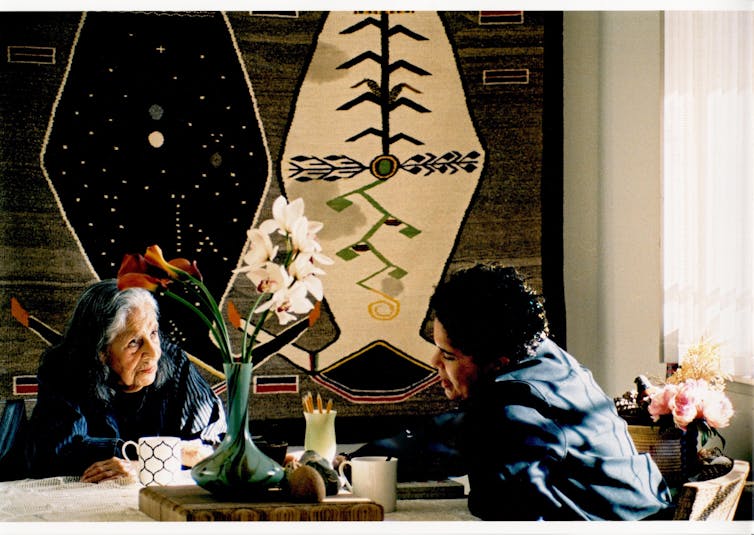
Born exactly 50 years apart, the two artists are captured here over the course of a day as the winter light caresses the scene as if bringing a still picture to life.
Dean’s films are poetically charged with impressions of stillness and time offering the viewer a deep sense of contemplation in stark contrast to the fervour of Circular Quay in the full swing of summer.
Nature and time
Another theme that runs through Dean’s prolific career is nature and deep time.
One room in the exhibition features two large-scale drawings and a photograph in conversation with each other to create a fragile rhythm as a reminder of the temporal nature of all things.
Chalk Fall (2018) and The Wreck of Hope (2022), referencing the romantic German painter Caspar David Friedrich, hang on opposing walls, as majestic drawings in chalk on blackboards.
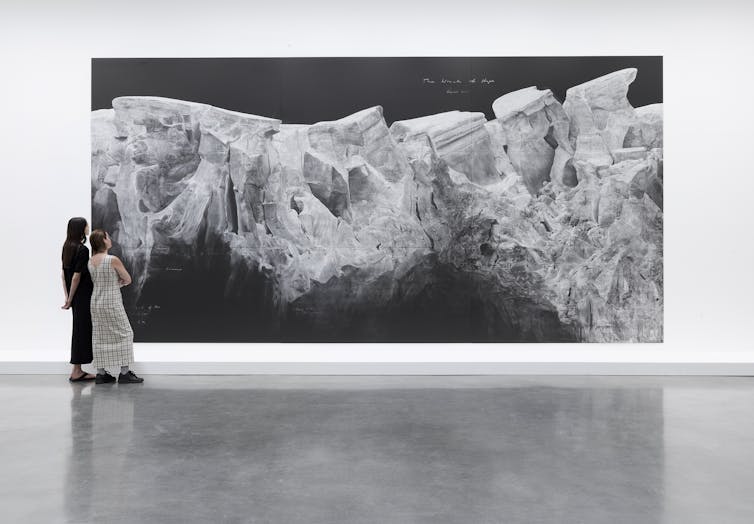
One features a cliff face; the other a receding glacier. It is a stark reminder of our fragile environment, constantly subject to change. Time is embedded in these drawings both in the meticulous, laborious processes of drawing at such a scale, and in the sense of geological time that sits outside the feeble imaginings of our own mortality.
At the end of this gallery is a large, evocative photograph overdrawn in colour pencil, featuring a 2,000-year-old cherry blossom tree in the Japanese prefecture of Yamanashi.
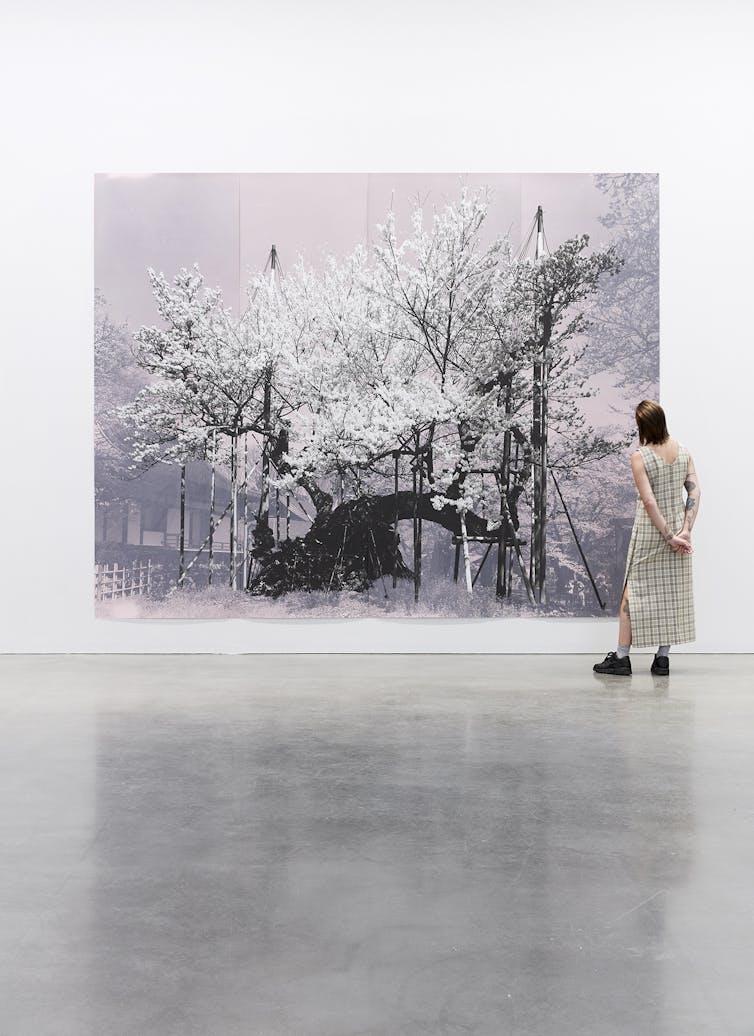
There is an inherent tension in this nature-portrait between the efforts to support the tree’s ancient limbs with wooden crutches, and the persistence of its blossoms that sweep up in a jewel-like majesty against the subtle pink sky.
Known for using analogue film, Dean’s film installation Geography Biography (2023) characterises her methodical, material approach to artmaking.
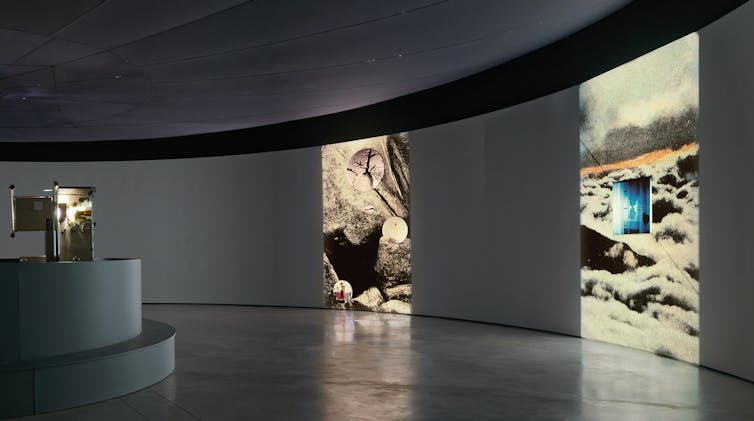
Bringing together chance encounters, obsolete materials and old film footage, Dean considers this work to be an “accidental self-portrait”. Accompanied only by the machinic projector noise, this filmic collage over two screens provides a mesmerising insight into the artist’s life and ways of making art.
Dean’s works are incredibly labour intensive. From filming the frescoes of Giotto hovering on a scissor lift or drawing large-scale renditions of glaciers, to editing endless rolls of film, this exhibition gives us pause to embrace the ephemeral nature of time itself.
Tacita Dean is at the Museum of Contemporary Art, Sydney, until March 3.
Read more: 'A deeply thoughtful and sensuous show': a rarely experienced intimacy with Louise Bourgeois
Donna West Brett received funding from the Bodleian Libraries at the University of Oxford as a Sloan Fellow in Photography 2024.
This article was originally published on The Conversation. Read the original article.
!["[T]he First and Fifth Amendments Require ICE to Provide Information About the Whereabouts of a Detained Person"](https://images.inkl.com/s3/publisher/cover/212/reason-cover.png?w=600)






